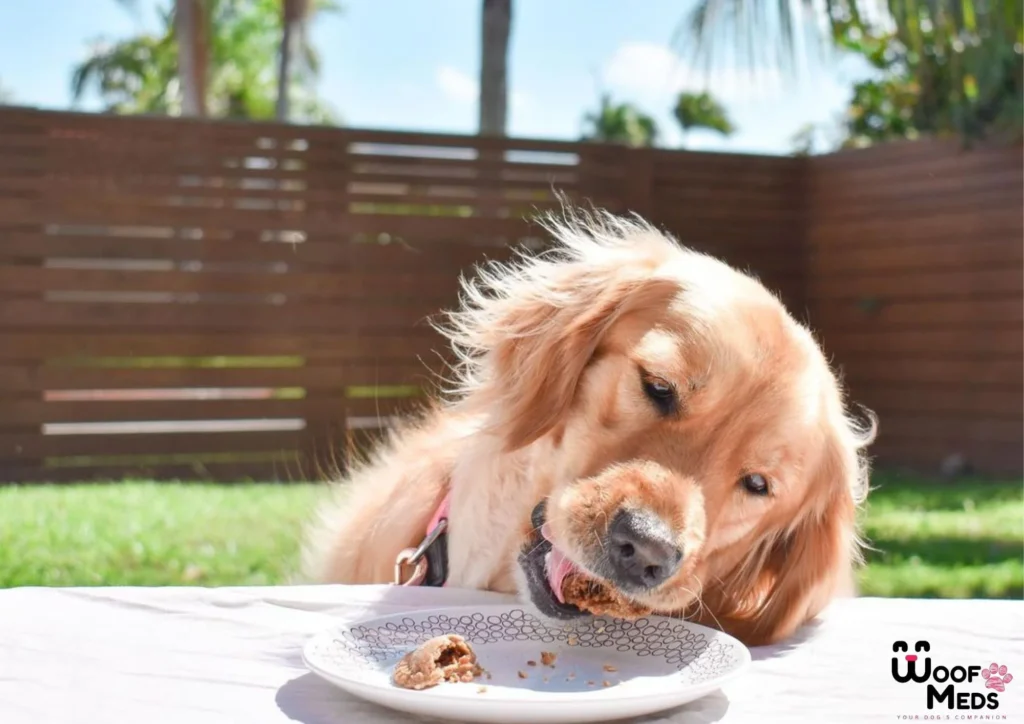Golden Retriever Puppy Training: A Comprehensive Guide
Golden Retrievers are one of the most beloved dog breeds, known for their intelligence, friendliness, and loyalty. Their charming personalities make them a popular choice for families, therapy work, and even as service dogs. However, like all puppies, Golden Retrievers require careful and consistent training to ensure they grow into well-behaved adult dogs. Training a Golden Retriever puppy is not only essential for their development but also an incredibly rewarding experience for owners. This guide will cover everything you need to know about training your Golden Retriever puppy, from basic commands to socialization and behavior management.
Understanding Golden Retriever Behavior
Before diving into training techniques, it’s crucial to understand the natural behavior of Golden Retrievers. These dogs are known for their intelligence and eagerness to please, making them relatively easy to train. However, they are also very energetic and require ample physical and mental stimulation. Without proper exercise and engagement, they can become bored and potentially develop destructive behaviors.
Golden Retrievers are naturally social animals. They thrive on human interaction and can become anxious or depressed if left alone for extended periods. Early socialization is key to ensuring they are comfortable around other dogs, people, and different environments.
Starting with the Basics: House Training
1. Establishing a Routine:
House training, or potty training, is one of the first things you’ll need to teach your Golden Retriever puppy. Consistency is the key. Start by establishing a regular feeding schedule, as puppies are more likely to need to go to the bathroom after eating. Take your puppy outside first thing in the morning, after meals, and before bedtime.
2. Choosing a Spot:
Designate a specific spot in your yard for your puppy to do their business. Take them to the same spot each time, and they will start to associate that area with going to the bathroom. Praise them enthusiastically when they go in the right spot.
3. Crate Training:
Crate training can be a helpful tool in house training your puppy. Dogs naturally avoid soiling their sleeping area, so keeping your puppy in a crate when you can’t supervise them can help prevent accidents. Make sure the crate is the right size – large enough for your puppy to stand, turn around, and lie down, but not so large that they have space to use the bathroom in one corner.
4. Handling Accidents:
Accidents will happen, especially in the beginning. If you catch your puppy in the act, interrupt them with a firm “No,” then immediately take them outside to their designated spot. Clean any indoor accidents thoroughly to remove the scent, as this can prevent future accidents in the same spot.
Teaching Basic Commands
Once your Golden Retriever puppy has mastered house training, you can begin teaching basic commands. These commands form the foundation of good behavior and will make further training easier.
1. Sit:
Teaching your puppy to sit is one of the most fundamental commands. Start by holding a treat close to your puppy’s nose. Slowly move your hand up, allowing your puppy’s head to follow the treat, which will cause their bottom to lower. Once they are in a sitting position, say “Sit” and give them the treat along with lots of praise.
2. Stay:
The “Stay” command is essential for keeping your puppy safe in various situations. To teach this, ask your puppy to sit. Then, hold your hand out in front of you and say “Stay.” Take a few steps back. If your puppy stays in place, reward them with a treat. Gradually increase the distance and duration as they get better at staying put.
3. Come:
“Come” is a vital command for recall. Start by crouching down to your puppy’s level and say “Come” in a cheerful tone. Encourage them by clapping your hands or showing a treat. When they come to you, reward them with praise and a treat. Practice this command in various locations and with different distractions to ensure reliability.
4. Down:
The “Down” command is useful for helping your puppy relax. Hold a treat in your hand and bring it to your puppy’s nose. Then, move your hand to the floor. Your puppy should follow the treat and lie down. Once they are lying down, say “Down” and give them the treat. Practice this command regularly, as it can help in calming your puppy in different situations.
Socialization: Exposing Your Puppy to the World
Socialization is a critical aspect of training your Golden Retriever puppy. The goal is to expose your puppy to a wide variety of people, animals, environments, and experiences in a positive and controlled manner. Proper socialization helps prevent fear and aggression issues later in life.
1. Meeting People:
Introduce your puppy to different types of people, including men, women, children, and the elderly. Allow them to interact with people of various appearances, such as those wearing hats, sunglasses, or carrying bags. Make these experiences positive by offering treats and praise.
2. Interacting with Other Dogs:
Arrange playdates with other puppies or well-behaved adult dogs. This helps your puppy learn how to interact with other dogs appropriately. Supervise these interactions to ensure they remain positive. Puppy classes are also an excellent way for your puppy to socialize in a controlled environment.
3. Exploring Different Environments:
Take your puppy to different places, such as parks, busy streets, and pet-friendly stores. Expose them to various sounds, surfaces, and objects. For example, let them walk on grass, gravel, and pavement, and allow them to explore objects like umbrellas, bicycles, and strollers.
4. Handling and Grooming:
Get your puppy used to being handled and groomed. Regularly touch their paws, ears, and mouth, and introduce them to brushing and nail trimming early on. This will make vet visits and grooming sessions much less stressful for both you and your dog.
Addressing Common Behavioral Issues
Even with the best training, Golden Retriever puppies can exhibit some common behavioral issues. Understanding how to address these behaviors early on is crucial to prevent them from becoming long-term problems.
1. Chewing:
Puppies naturally chew as they explore their world and relieve teething discomfort. Provide plenty of appropriate chew toys to satisfy this urge. If your puppy starts chewing on something they shouldn’t, redirect them to a toy and praise them when they use it. Avoid giving your puppy old shoes or household items to chew on, as this can confuse them about what is appropriate to chew.
2. Jumping:
Golden Retrievers are friendly and often express their excitement by jumping up on people. To discourage this, ignore your puppy when they jump and only give them attention when all four paws are on the ground. You can also teach the “Off” command to gently remind them not to jump.
3. Biting:
Puppy biting is common, especially during play. If your puppy bites too hard, let out a high-pitched yelp to mimic the sound their littermates would make. This signals to your puppy that they’ve hurt you. If they continue to bite, stop playtime and ignore them for a short period. Consistency is key to teaching bite inhibition.
4. Barking:
Excessive barking can become a problem if not addressed early. Identify the cause of the barking – whether it’s boredom, fear, or attention-seeking. Provide plenty of mental and physical stimulation to reduce boredom-induced barking. Teach the “Quiet” command by rewarding your puppy when they stop barking on command.
Advanced Training: Preparing for Adulthood
Once your Golden Retriever puppy has mastered basic commands and behavior, you can move on to more advanced training. This not only keeps your puppy mentally stimulated but also prepares them for various roles and responsibilities as they grow older.
1. Leash Training:
Walking on a leash without pulling is an important skill for any dog. Start by letting your puppy wear a collar and leash around the house to get used to it. Practice walking indoors, rewarding your puppy for staying by your side. If they start pulling, stop walking and wait for them to come back to you before continuing. Gradually increase the difficulty by introducing outdoor walks with more distractions.
2. Recall in High Distraction Environments:
As your puppy gets better at the “Come” command, practice recall in more challenging environments. Start in a fenced area with mild distractions and gradually increase the difficulty. This ensures that your dog will come back to you even in exciting or potentially dangerous situations.
3. Impulse Control:
Teaching impulse control is crucial for safety and good behavior. Exercises like “Leave it” and “Wait” help your puppy learn to resist temptation and focus on you. For “Leave it,” place a treat on the floor and cover it with your hand. When your puppy looks away from the treat, reward them with a different treat from your other hand. For “Wait,” have your puppy sit and wait before eating their food, crossing the street, or getting out of the car.
4. Tricks and Games:
Teaching your Golden Retriever puppy tricks and playing interactive games is a great way to keep them mentally stimulated. Tricks like “Shake,” “Roll over,” and “Spin” are fun and relatively easy to teach. Games like fetch, hide and seek, and puzzle toys challenge your puppy’s mind and keep them engaged.
The Importance of Consistency and Patience
Training a Golden Retriever puppy requires consistency, patience, and a positive attitude. Puppies are like sponges, absorbing everything around them, but they also have short attention spans. Keep training sessions short, fun, and frequent. Aim for 5-10 minute sessions multiple times a day, rather than one long session.
Consistency is key to reinforcing good behavior. Ensure that everyone in the household is on the same page with commands and rules. Mixed messages can confuse your puppy and slow down their progress
Patience is equally important. Puppies make mistakes, and training is a gradual process. Celebrate small victories and don’t get discouraged by setbacks. Remember, your Golden Retriever puppy wants to please you – they just need the right guidance.
Building a Strong Bond Through Training
One of the most rewarding aspects of training your Golden Retriever puppy is the strong bond that develops between you and your dog. Training isn’t just about teaching commands; it’s about building trust, communication, and a deep connection.
Spend quality time with your puppy outside of training sessions. Engage in play, cuddle, and simply enjoy each other’s company. The more time you spend together, the stronger your bond will become, making training even more effective.
Conclusion
Training a Golden Retriever puppy is a journey filled with challenges, learning, and immense joy. From house training and basic commands to socialization and advanced skills, every step is an opportunity to shape your puppy into a well-mannered and happy adult dog. Remember that consistency, patience, and positive reinforcement are your best tools in this process. With the right approach, your Golden Retriever puppy will grow into a loyal, loving, and well-behaved companion who will bring happiness to your life for years to come.
Frequently Asked Questions (FAQ)
1. How soon should I start training my Golden Retriever puppy?
- Answer: You should start training your Golden Retriever puppy as soon as you bring them home, usually around 8 weeks old. Begin with basic commands, house training, and socialization. Early training helps establish good habits and strengthens your bond with your puppy.
2. How long does it take to house train a Golden Retriever puppy?
- Answer: House training can take anywhere from a few weeks to a few months, depending on the consistency of your training and your puppy’s individual learning pace. Establishing a routine, using crate training, and positive reinforcement can speed up the process.
3. What is the best way to stop my Golden Retriever puppy from biting?
- Answer: To stop biting, use a high-pitched yelp when your puppy bites too hard, mimicking the response of a littermate. This signals to your puppy that they have hurt you. If biting continues, stop playtime and ignore them briefly. Redirecting their attention to chew toys and practicing bite inhibition exercises can also help.
4. How do I socialize my Golden Retriever puppy?
- Answer: Socialize your puppy by gradually exposing them to different people, animals, environments, and experiences in a positive and controlled manner. Puppy classes, playdates, and regular outings to various places are great ways to ensure your puppy becomes comfortable in different situations.
5. What should I do if my puppy keeps chewing on furniture?
- Answer: Provide plenty of appropriate chew toys to satisfy your puppy’s need to chew, especially during teething. If they start chewing on furniture, redirect them to a toy and praise them when they use it. Puppy-proofing your home and using deterrent sprays can also help protect your furniture.
6. How can I teach my Golden Retriever puppy to walk on a leash without pulling?
- Answer: Start leash training indoors by letting your puppy wear a collar and leash to get used to it. Practice walking in short, controlled sessions, rewarding your puppy for staying by your side. If they pull, stop walking and wait for them to come back to you before continuing. Gradually increase the difficulty by introducing outdoor walks.
7. What are some essential commands to teach my Golden Retriever puppy?
- Answer: Essential commands include “Sit,” “Stay,” “Come,” “Down,” and “Leave it.” These commands form the foundation of good behavior and can keep your puppy safe in various situations. Consistent practice and positive reinforcement are key to teaching these commands.
8. Is crate training necessary for my Golden Retriever puppy?
- Answer: Crate training is highly recommended as it helps with house training, prevents destructive behavior when unsupervised, and provides a safe and secure space for your puppy. Make sure the crate is appropriately sized and introduce it as a positive experience.
9. How do I stop my Golden Retriever puppy from jumping on people?
- Answer: To stop jumping, ignore your puppy when they jump and only give them attention when all four paws are on the ground. Consistency is important; ensure everyone in the household follows the same approach. Teaching the “Off” command can also help manage this behavior.
10. How much exercise does my Golden Retriever puppy need?
- Answer: Golden Retriever puppies are energetic and require regular exercise to stay healthy and happy. A good rule of thumb is 5 minutes of exercise per month of age, up to twice a day. For example, a 3-month-old puppy should get about 15 minutes of exercise, twice a day. This can include walks, playtime, and mentally stimulating activities.
11. How can I prevent my Golden Retriever puppy from barking excessively?
- Answer: Identify the cause of the barking, whether it’s boredom, fear, or attention-seeking. Provide plenty of mental and physical stimulation to reduce boredom-induced barking. Teach the “Quiet” command by rewarding your puppy when they stop barking on command. Consistency and patience are key to addressing excessive barking.
12. When can I start advanced training with my Golden Retriever puppy?
- Answer: Once your puppy has mastered basic commands and is well-socialized, you can start advanced training, usually around 6 months of age. This can include leash training in high-distraction environments, impulse control exercises, and fun tricks to keep your puppy mentally stimulated.
13. How do I handle my Golden Retriever puppy’s separation anxiety?
- Answer: Start by gradually getting your puppy used to being alone for short periods, increasing the duration over time. Provide them with toys and activities to keep them occupied while you’re away. Crate training can also help, as the crate becomes a secure space where they feel comfortable. Avoid making a big deal out of leaving or returning home to prevent reinforcing anxiety.
14. What should I do if my Golden Retriever puppy won’t listen?
- Answer: If your puppy isn’t listening, check if they’re tired, hungry, or distracted. Make sure training sessions are short, fun, and positive to keep their attention. If your puppy is still not responding, consider if they need more practice with basic commands or if the environment is too distracting for their current level of training.
15. Can I train my Golden Retriever puppy without using treats?
- Answer: Yes, while treats are an effective way to reward good behavior, you can also use praise, toys, and playtime as rewards. The key is to find what motivates your puppy and use it consistently during training. Over time, you can gradually reduce the reliance on treats as your puppy learns to respond to commands without them.
16. How do I manage my Golden Retriever puppy’s energy levels?
- Answer: Regular exercise, mental stimulation, and interactive play are essential to managing your puppy’s energy levels. Activities like fetch, puzzle toys, and training sessions can help burn off excess energy and keep your puppy calm and well-behaved.
17. What should I do if my Golden Retriever puppy shows signs of aggression?
- Answer: Early intervention is crucial if your puppy shows signs of aggression, such as growling, snapping, or biting. Consult with a professional dog trainer or behaviorist to address the issue. Socialization, consistent training, and ensuring your puppy feels safe and secure are key to preventing and managing aggression.
18. How can I teach my Golden Retriever puppy to be calm?
- Answer: Teach your puppy to be calm by reinforcing relaxed behavior with treats and praise. Commands like “Down” and “Stay” can help your puppy learn to settle. Regular exercise and mental stimulation are also important to help your puppy burn off excess energy and remain calm in different situations.
19. How do I know if I’m overtraining my Golden Retriever puppy?
- Answer: Signs of overtraining include your puppy losing interest, becoming frustrated, or showing signs of stress, such as yawning, licking their lips, or avoiding eye contact. Keep training sessions short (5-10 minutes), frequent, and fun. If your puppy seems tired or disinterested, it’s time to end the session and try again later.
20. When should I seek professional help with my Golden Retriever puppy’s training?
- Answer: If you’re struggling with specific behavioral issues, such as aggression, fear, or severe anxiety, or if your puppy isn’t responding to basic training methods, it may be time to seek professional help. A certified dog trainer or behaviorist can provide personalized guidance and support to address your puppy’s unique needs.



